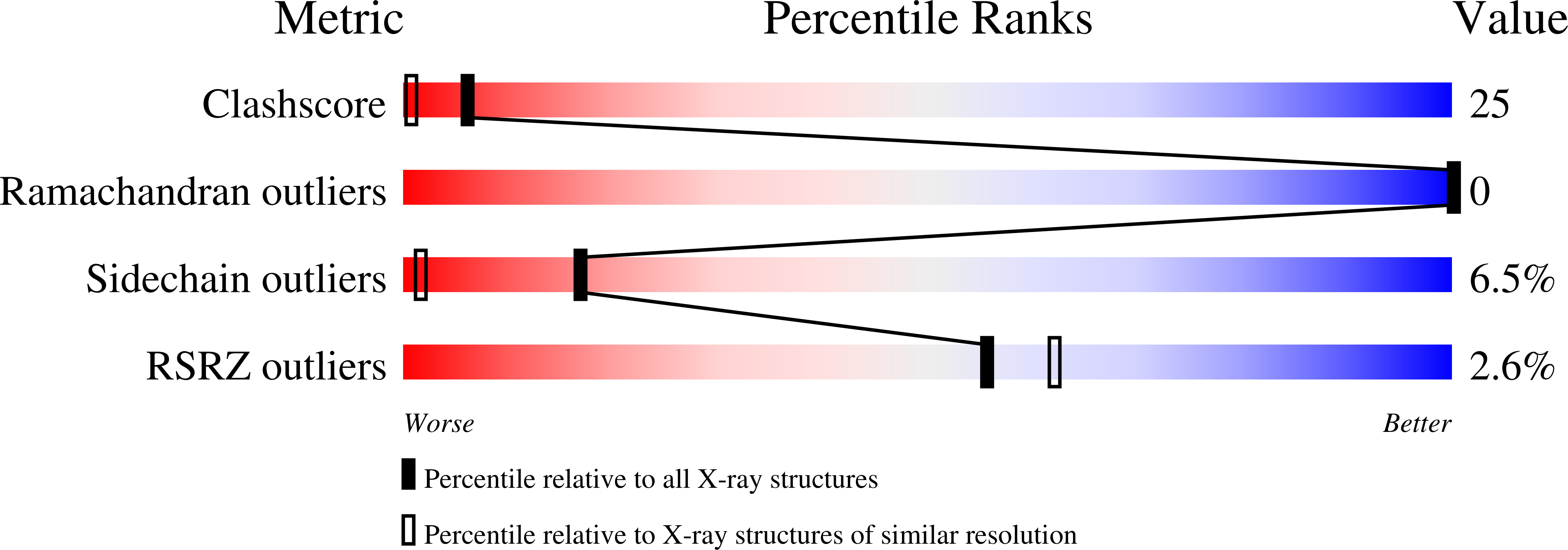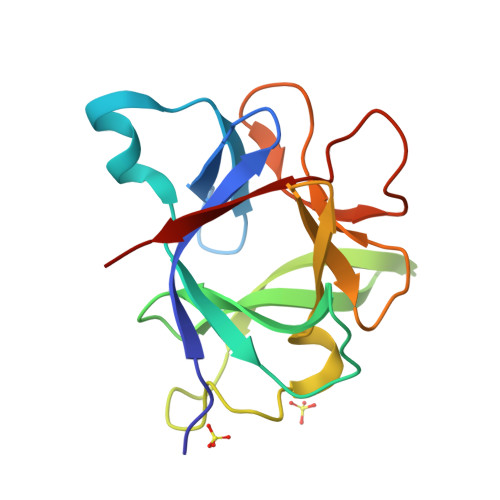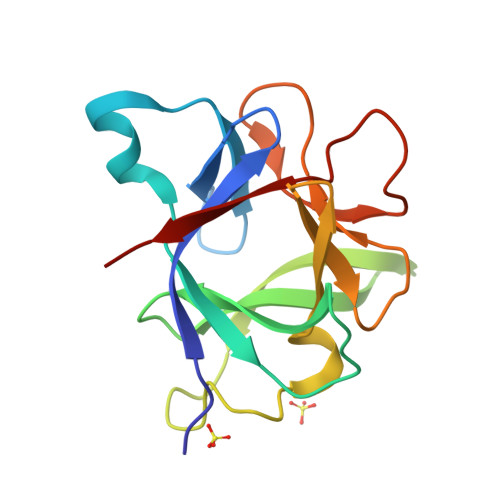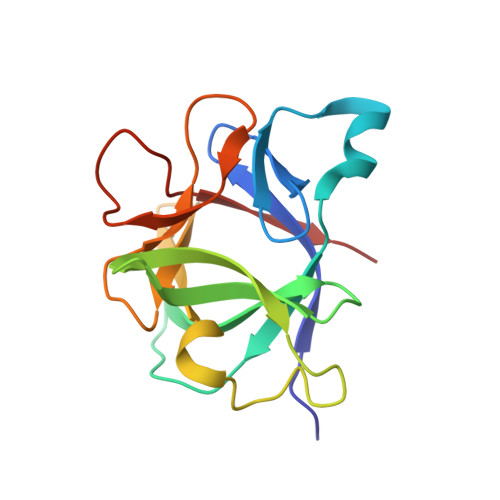Determination of solvent content in cavities in IL-1beta using experimentally phased electron density
Quillin, M.L., Wingfield, P.T., Matthews, B.W.(2006) Proc Natl Acad Sci U S A 103: 19749-19753
- PubMed: 17179045
- DOI: https://doi.org/10.1073/pnas.0609442104
- Primary Citation of Related Structures:
2NVH - PubMed Abstract:
The extent to which water is present within apolar cavities in proteins remains unclear. In the case of interleukin-1beta (IL-1beta), four independent structures solved by x-ray crystallography indicate that water is not present in the central apolar cavity. In contrast, results from NMR spectroscopy suggest that water has high occupancy within the cavity but is positionally disordered, making it undetectable by standard crystallographic methods. A theoretically based crystallographic-phase refinement technique also suggested that there was the equivalent of two fully occupied water molecules within the apolar cavity. To resolve these discrepancies we sought to obtain an experimentally phased electron density map that was free of possible bias caused by mathematical modeling of the protein or the solvent. By combining native diffraction data with multiple wavelength anomalous data from a platinum derivative, accurate phases were obtained. Using these experimental phases, we estimate that occupancy of the apolar cavity in IL-1beta by solvent is close or equal to zero. Polar cavities in the protein that contain ordered solvent molecules serve as internal controls.
Organizational Affiliation:
Institute of Molecular Biology, Howard Hughes Medical Institute, University of Oregon, Eugene, OR 97403-1229, USA.



















